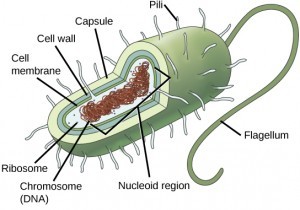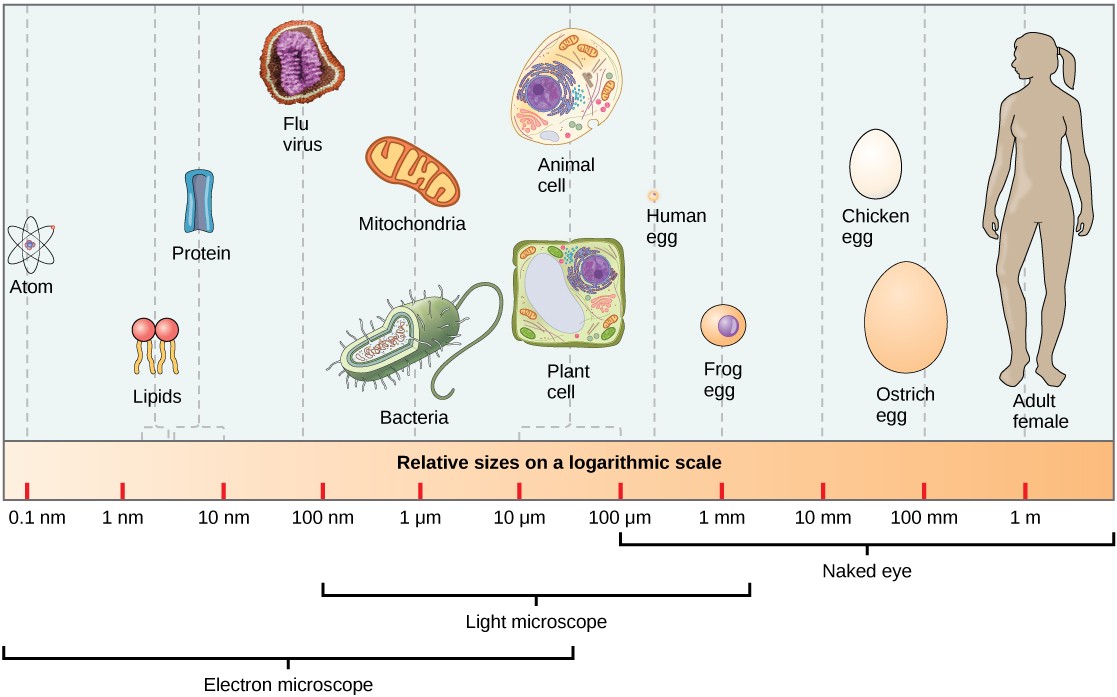Cells, the fundamental units of life, are broadly categorized into two distinct types: prokaryotic and eukaryotic. This classification hinges on the fundamental structural differences that dictate their functions and complexities. Understanding these differences is crucial in grasping the diversity of life forms, from the simplest bacteria to complex multicellular organisms like humans. This article delves into a detailed comparison of prokaryotic and eukaryotic cells, highlighting their unique characteristics and shared components.
What are Prokaryotic Cells?
Prokaryotic cells represent the simpler form of cellular life. Defining features of prokaryotes are the absence of a nucleus and other membrane-bound organelles. The term “prokaryote” itself, derived from Greek roots, signifies “before nucleus,” aptly describing their evolutionary precedence. These cells are primarily found in single-celled organisms belonging to the domains Bacteria and Archaea.
Despite their simplicity, prokaryotic cells possess all the essential components for life. Their DNA, the genetic blueprint, is located in a central region called the nucleoid, which is not enclosed by a membrane. The cytoplasm, a gel-like substance, fills the cell and houses ribosomes, the protein synthesis machinery. A plasma membrane forms the outer boundary, regulating the passage of substances in and out of the cell. Many prokaryotes are further protected by a rigid cell wall, and some have an additional outer layer called a capsule. Some prokaryotes also exhibit external structures like flagella for movement and pili for attachment or genetic material exchange.
Bacteria, a prominent group of prokaryotes, are characterized by a cell wall made of peptidoglycan, a unique polymer of sugars and amino acids. This peptidoglycan layer provides structural support and protection. The capsule, when present, aids in adherence to surfaces and can offer additional protection against environmental stresses. Flagella enable motility, allowing bacteria to move towards nutrients or away from harmful substances. Pili facilitate various functions, including attachment to host cells and conjugation, a process of horizontal gene transfer.
What are Eukaryotic Cells?
Eukaryotic cells, in contrast to prokaryotes, are characterized by their intricate internal organization. The defining feature of eukaryotes is the presence of a membrane-bound nucleus, which houses the cell’s DNA. The term “eukaryote,” meaning “true nucleus,” underscores this key distinction. Eukaryotic cells are found in more complex organisms, including animals, plants, fungi, and protists.
Beyond the nucleus, eukaryotic cells are replete with other membrane-bound organelles, each performing specialized functions. These organelles compartmentalize cellular processes, enhancing efficiency and complexity. Examples include mitochondria for energy production, the endoplasmic reticulum and Golgi apparatus for protein and lipid synthesis and modification, lysosomes for waste breakdown, and, in plant cells, chloroplasts for photosynthesis. Like prokaryotes, eukaryotic cells also possess a plasma membrane, cytoplasm, and ribosomes. Plant cells, fungi, and some protists also have a cell wall, though its composition differs from that of prokaryotic cell walls.
Key Differences Between Prokaryotic and Eukaryotic Cells
The fundamental distinction between prokaryotic and eukaryotic cells lies in their structural complexity, particularly concerning the nucleus and organelles. Here’s a comparative overview of the key differences:
| Feature | Prokaryotic Cell | Eukaryotic Cell |
|---|---|---|
| Nucleus | Absent (nucleoid region) | Present (membrane-bound) |
| Organelles | Absent (membrane-bound) | Present (membrane-bound organelles) |
| Size | Smaller (0.1–5.0 µm) | Larger (10–100 µm) |
| Complexity | Simpler | More Complex |
| Organisms | Bacteria and Archaea | Animals, Plants, Fungi, Protists |
| DNA Organization | Circular, in nucleoid | Linear, in nucleus |
| Cell Wall (if present) | Peptidoglycan (in bacteria) or other substances | Cellulose (plants), Chitin (fungi), or absent (animals) |
| Ribosomes | Smaller | Larger |


Cell Size and Complexity: Implications for Function
The size difference between prokaryotic and eukaryotic cells is not merely a matter of scale; it has profound implications for cellular function. Prokaryotic cells, being significantly smaller, have a higher surface area-to-volume ratio. This facilitates efficient diffusion of nutrients and waste products across the cell membrane. The rapid exchange of substances is crucial for their metabolic rate and quick reproduction.
Eukaryotic cells, with their larger size, face challenges in maintaining efficient diffusion. To overcome this limitation, they evolved internal membrane-bound organelles. These organelles increase the total membrane surface area within the cell, facilitating transport and compartmentalizing metabolic processes. This compartmentalization allows for greater complexity and regulation of cellular functions, supporting the development of multicellularity and specialized tissues in eukaryotic organisms.
In essence, the contrasting architectures of prokaryotic and eukaryotic cells reflect different evolutionary strategies for life. Prokaryotes, with their simple yet effective design, thrive in diverse environments as single-celled organisms. Eukaryotes, with their complex internal organization, underpin the vast diversity of multicellular life, enabling sophisticated functions and adaptations. Understanding the comparison between these two fundamental cell types is key to appreciating the organization and evolution of all living organisms.